Taking Care of Japanese Maple Roots
Unlike other trees belonging to the Maple family, the Japanese Maple has a unique shoot and root systems structure. For example, its canopy is spread out and covers a vast area, despite having pointed clustered leaves. Similarly, the plant’s flowers are inconspicuous and can’t be seen.
The root system of a Japanese Maple tree is also quite different and unique. These plants have a horizontal root structure rather than growing vertically as a tap root or spreading into branches like a fibrous root system.
Since the plant species is quite vulnerable and the roots can die down if not taken proper care of, we have explained the caring and maintenance process of the Japanese Maple roots.
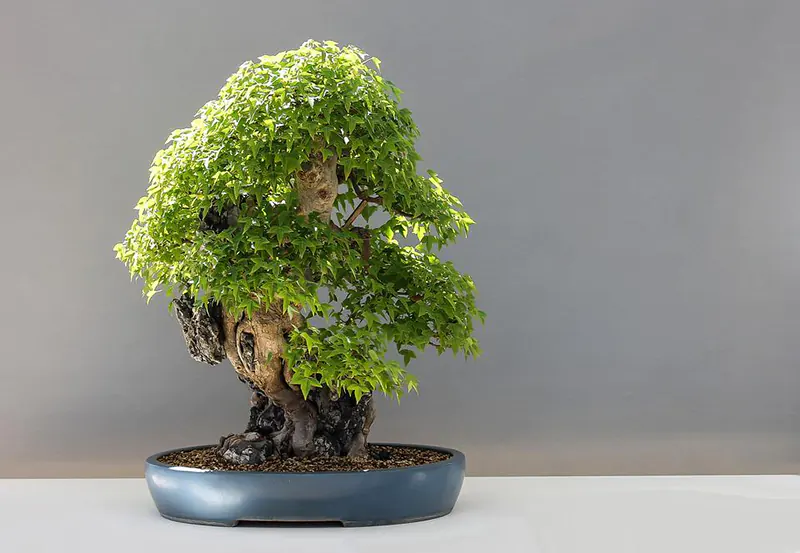
Brief Anatomy of Japanese Maple Roots
The Japanese Maple roots grow horizontally rather than vertically as tap or fibrous roots. Usually, the mature roots grow up to a depth of 24 inches from the topsoil, and then they bend and move along the horizontal plane. Small fibrous roots grow right at the drip line and extend beyond it.
As the canopy of the Japanese Maple plant is enormous, its dripline is located far from the main trunk. Therefore, the roots grow pretty long to reach the boundary or the critical point of the tree. Here, they can easily absorb the rainwater falling from the canopy’s edge.
The root portion between the main trunk and dripline helps stabilize the plant and helps in the transfer of absorbed water. If the Japanese Maple grows outdoors, the roots may grow a little deeper due to the soil depth and structure.
Why Should You Care For The Japanese Maple Roots?
Even though most parts of the Japanese Maple plant are vulnerable, gardeners usually concentrate on caring for the leaves, flowers, canopy, and branches. They hardly pay attention to the roots, which is why the trees die down much earlier than expected.
So, you must be aware of how proper caring can benefit the Japanese Maple roots.
- With proper care and maintenance, the roots can grow quickly and extend beyond the drip line.
- The roots must grow properly after planting a cutting or a grafted stock in the soil.
- Also, the fibrous roots can spread out evenly straight through the drip line for better water absorption.
- If the primary root branches are weakened, it will cause the tree to become unstable.
- The roots of the Japanese Maple plant play a crucial role in maintaining the canopy’s weight, so they need to be taken care of.
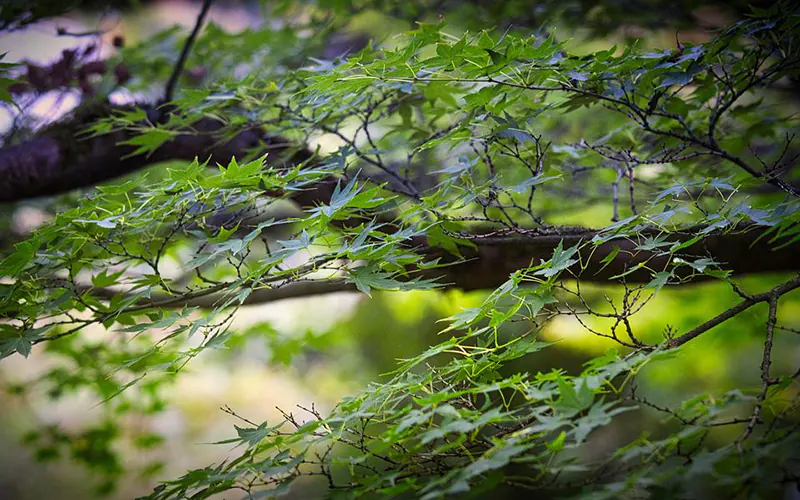
How To Take Proper Care Of The Japanese Maple Roots?
The caring techniques for the Japanese Maple plant are different for each season. Besides, they depend on geological, environmental, and other factors. Therefore, before we list down the care ways, first, let’s look at the factors that affect the health of Japanese Maple roots.
Factors affecting the health of the Japanese Maple roots
- Soil texture
To promote the growth of new Japanese Maple trees or maintain mature roots’ health, the soil needs to have a light and airy texture. The roots won’t survive in clayey or rocky soil, and their growth will be retarded.
- Soil composition
The soil composition also affects the health of the Japanese Maple roots. Make sure it should have organic components, minerals, and vitamins in adequate amounts. Apart from this, nitrogen should be present in low quantity because nitrogenous bacteria can’t survive in the roots of this plant.
- Moisture content
Also, the soil should retain moisture throughout the air because the roots need water supply constantly, especially when the plant is grown in a pot. However, too much moisture can damage the root cells, especially at the drip line region, which is why the water content should be controlled.
- Space
The roots grow horizontally, and therefore, you shouldn’t plant any other tree with competitive roots near the Japanese Maple plant. You should leave enough room for the roots to spread out along the surface without competing with others for nutrients and water in the soil.
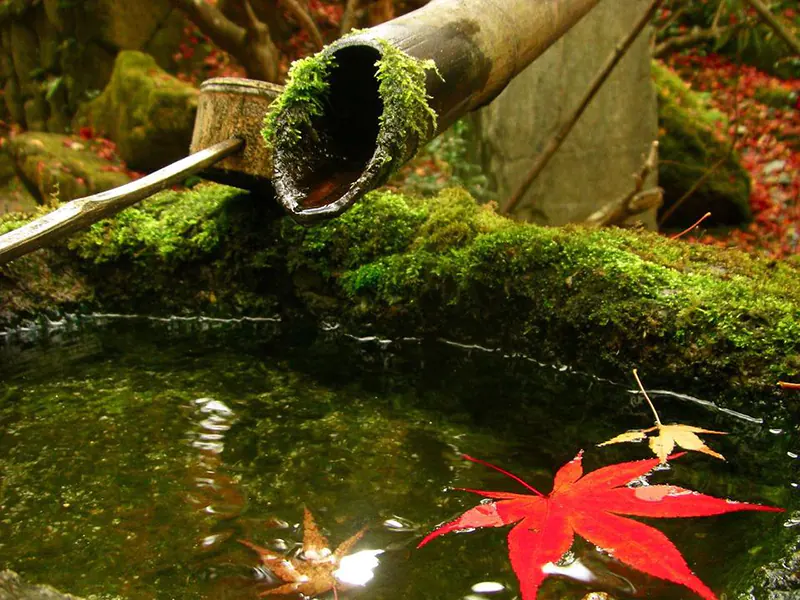
Caring Tips For The Japanese Maple Roots Throughout The Year
The Japanese Maple plant needs special care throughout the year. However, these caring methods will vary from one season to another because of the species’ vulnerability to weather conditions.
Therefore, in the below section, we have discussed the caring ways for the Japanese Maple as per the four main seasons.
Summer Season
The roots continue to grow further in the summer season until they reach the drip line. Therefore, the soil should be aerated and watered at least once a week. But if your plant is growing in a pot like a Bonsai, watering needs to be done more often during the summers.
Fall Season
During the fall season, most gardeners plant new cuttings for vegetative propagation of the tree. Therefore, the roots need to be taken care of properly below the snow starts. That’s why you should water the soil adequately by the late fall so that the ground can have enough moisture during the frost period.
Winter Season
In the winter season, the snow sheet accumulating at the top of the earth’s surface can harm the roots, especially the tiny, delicate fibrous roots present at the dripline. Therefore, you need to insulate the soil properly. Ensure to water the topsoil during early winter, provided frost or snow hasn’t started yet. This will insulate the roots and prevent them from getting damaged due to freezing and snow.
Spring Season
As new, healthy roots grow during the early spring season, you should ensure that watering is done correctly. Also, let the frost melt properly before you aerate the soil and add fertilizers.
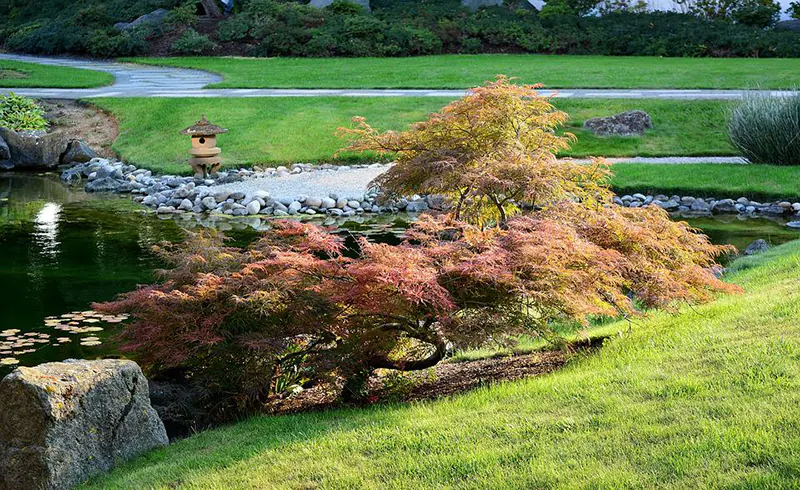
Tips to Keep The Roots Healthy And Facilitate Their Growth
Besides keeping the above weather-based caring techniques in mind, you should also implement other methods to increase the roots’ growth rate. In the below section, we have discussed how you can keep the Japanese Maple roots healthier.
- Addition of fertilizers
As the Japanese Maple plant is a slow-growing species, it’s better not to use nitrogen-based fertilizers. This will cause improper and unwanted growth that won’t keep the roots healthy. So, use a fertilizer having slow-releasing compounds with low nitrogen content. Also, you can add the fertilizers only during the second life cycle of a particular plant.
- Mulch addition and mixing
Mulch can be added during the late fall to ensure that the ground is appropriately insulated. You can add the bark pieces into the mulch for more nutrition. Ensure it is completely organic and doesn’t contain any harmful pesticides or other chemicals. Keep an eye on it because sometimes, mulch can decompose, further damaging the roots if allowed to stay in contact with the topsoil.
- Frequency of watering
If you are growing the Japanese Maple plant outside, watering needs to be done once a week or two. This is because these plants can absorb water present in the soil along the drip line. Therefore, there is no need to add excess water. But if you are growing the plant in a pot, it is advisable to water it at least twice a week.
- Evaporation of water from the soil
Suppose the summer season in your area is quite hot. In that case, it will cause evaporation of water from the soil, thereby leaving it dry. The roots of the Japanese Maple plant won’t be able to absorb water and will slowly suffer from wilting. This is why using heat insulators to improve the soil’s moisture retention property can reduce the evaporation rate with ease.
- Using compost and manures
If you use compost and manures, do not directly mix them with the soil. Instead, add them into the mulch mix and pour the entire content over the topsoil. Ensure that the compost or manure is completely organic and made at home.
What Will Happen If The Japanese Maple Roots Are Not Taken Proper Care Of?
If the Japanese Maple roots aren’t taken care of properly, the tree’s growth will be affected. During extreme temperatures, the root cells may die, thereby causing the death of the overall plant gradually but eventually. Also, unhealthy roots will have an impact on water absorption. If the plant cells do not absorb enough water, the leaves and flowers will suffer from drooping or wilting.
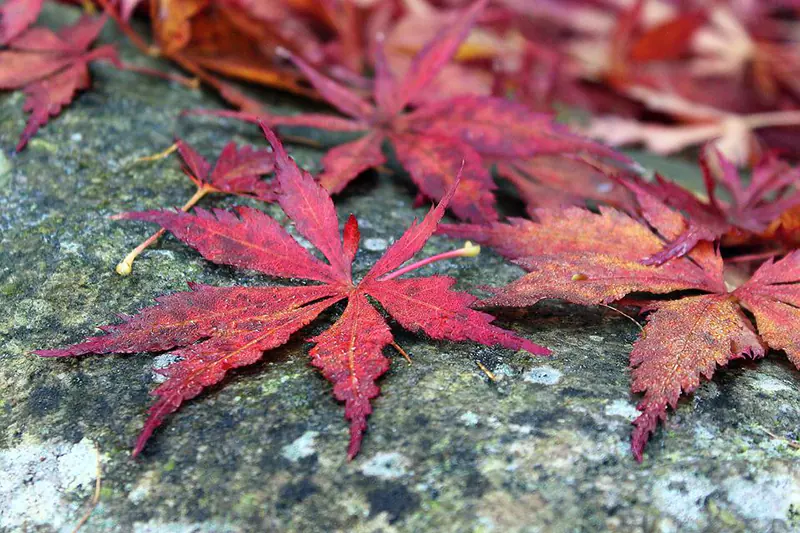
Wrapping Up
It is indeed not easy to ensure healthy roots in the Japanese Maple plant, especially when there are so many varieties of the species. Moreover, these varieties have different environmental and geological conditions to grow properly. Therefore, you should follow the proper guide and ensure that the soil is taken care of as per the type of Japanese Maple you want to grow.
Also, always remember that the caring tips of the plant will vary according to the place where you want to grow the tree. For example, the outdoor soil should be aerated properly to maintain air circulation. But on the other hand, you may or may not have to aerate the soil too often.







